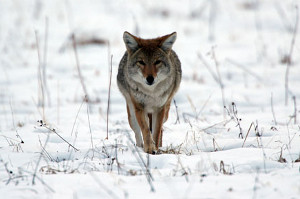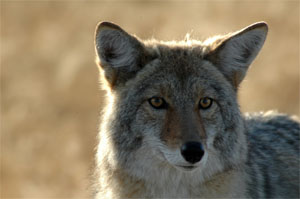To date, we have been geocaching for little over a year. In that time, we have seen some great caches and some great places. Occasionally we have had the pleasure of seeing great caches hidden in great places. But never before have we experienced retrieving a cache from a beautiful place, recording a DNF while being brought to another great place, and getting a history lesson, all on the same day.

Waiting for Diego to disembark from the Atlantic Vision. (click to enlarge)
This past Saturday, my wife (Gem) and I accompanied our geocaching neighbor to Argentia to pick up her husband, who works on the ferry. Of course, we couldn’t let a road trip be wasted. We had to do some caching along the way. The ferry wasn’t arriving until 9:30AM so we hit the road early, with 9 caches entered into our GPS devices. We were excited.
On the way, we had no problems finding the caches and, even when we reached Placentia, we found the first two easily. The third cache in Placentia is where part of this story develops. The cache we were heading for is called Out From St. Leonards (GC1XXJ0)

The beautiful vantage point over Placentia. (click to enlarge)
We had finally found the cemetery that the description lists as the way to approach ground zero. The women wanted me to check it out so I jumped out of the vehicle and started running down the trail. I rounded a corner and had to come to a quick stop. I don’t know if seeing the wonderful view of Placentia made me stop or the fact that, if I had kept running, I would have gone off a cliff. I think it was both. I immediately ran back to get my camera and the women followed this time. The area provided a wonderful vantage point to see Placentia. It would also make a nice thinking spot. Nonetheless, this was the wrong trail. In fact, we couldn’t find the right trail so this proved to be one of the best DNFs (Did Not Find) we have had.

The town of Ship Harbour. (click to enlarge)
After being treated to such a beautiful view of Placentia and a short chat with the cemetery custodian, it was time to meet the ferry, pick up our passenger, and head home. Sadly, we were finished caching for the day. On the way out, however, we seen a sign announcing the Atlantic Charter. I mentioned to everyone that there was one cache down there called
Kelly’s Meridian (GC5D29). Our passenger was now the driver and asked if we wanted to check it out. Obviously, my answer was yes! The cache, and the monument dedicated to a very important piece of history, is about 25km down Fox Harbour Road in the very small community of Ship Harbour.

The dedication plaque located about 600 meters from the cache site. (click to enlarge)
For those of you who have never heard of the Atlantic Charter, you are not the only one. Apparently, either I was never taught this important piece of history or I simply had forgotten about it. The Atlantic Charter was an agreement signed by the United States of America (Franklin Roosevelt) and Great Britain (Winston Churchill) to establish a vision of what a post-WWII world would look like. It was established on August 14, 1941 aboard the HMS Prince of Wales and the U.S.S. Augusta in Placentia Bay, just off the coast of the Kelly’s Meridian cache site. The interesting fact here is that it was a very bold move, especially on the part of the United States. At that point in time, the US had not entered the war but Roosevelt felt very strong about what the world should be like. During these offshore meetings, they agreed to the following eight principles:
- The United States And Great Britain agreed to seek no territorial gains as a result of the outcome of World War II.
- Any territorial adjustments would be made with the wishes of the affected people taken into consideration.
- Self-determination was a right of all people.
- A concerted effort would be made to lower trade barriers.
- The importance of the advancement of social welfare and global economic cooperation were recognized as important.
- They would work to establish freedom from fear and want.
- The importance of freedom of the seas was stated.
- They would work towards postwar disarmament and the mutual disarmament of aggressor nations.

The complete memorial wall. (click to enlarge)
Although no actual charter was signed in Placentia Bay, all of the groundwork for the Charter was discussed and agreed upon. The actual Charter would be signed later on in the year and the Atlantic Charter, itself, would go on to become the starting principles of the United Nations. That is a pretty big deal! Essentially, Placentia Bay, Newfoundland-Labrador is the birthplace of the United Nations!

This lawnmower was just sitting there with no one else around. (Click to enlarge)
Upon arriving in Ship Harbour, you must drive into the site on a dirt road about 2km. The road is in good shape for all types of vehicles. When we first arrived, our astonishment of the area and its view had to be put on hold for a few minutes as we noticed a lawnmower sitting by itself in the grassy field. Since we were all alone here and there were no other vehicles around, it looked out of place.

A beautiful place to have a picnic. (click to enlarge)
The area itself is beautiful. The road ends at the plaque site which has a beautiful picnic area, suitable for making this area your lunch break. From the plaque site, there is a short trail (less than 100m) leading down to a flat, wide open area that leads to the rocky beach and to a curved peninsula that juts out in Placentia Bay. From here, we could see the Atlantic Vision off in the distance as well as some picturesque landscape. Our detour to this place was definitely worth it it and the trip was made even sweeter by the Atlantic Charter monument and the chance to find another cache.

Retrieving the cache. (click to enlarge)
happens to be the only cache down in this area, which is a shame. I feel that there would be more cachers attempting this if there were more caches to find. The cache, itself, gets its name from the fact that it is extremely close to one of the meridian lines (lines of longitude). The cache owner wanted to place it on the line but it would have been too far out to sea. The cache is placed about 500 meters out on the curved peninsula in the open, but covered up. Due to the fact that most tourists will only make it as far as the monument site, the cache should remain safe. After I retrieved the cache and signed the log, I stood there and gazed out over the water. I tried to put myself back to 1941 and tried to picture seeing all those warships anchored offshore. For someone who likes history, it was surreal.

The view out Placentia Bay
The geocaching map on Geocaching.com reveals another cache just across the harbour. To access it, you must trek several kilometers along a trail and then along the coast out to the point. The cache is called
Issic Bunkers and is placed near some WWII bunkers. Due to time constraints, we were not able to make the trek for this one but will on the next trip down here. The entire area is relatively untouched by caches and has plenty of space for some great cache placements. Perhaps the hosting of an event down here is what is needed or just for some geocachers to start placing some more caches. With that type of investment, this place could become a great geocaching destination.
While on the surface, geocaching down in Placentia didn’t appear to offer anything but the chance to merely find some caches. The trip, however, proved to be anything but lack lustre. Besides the seven of ten caches we found, we were blessed with two great experiences and a history lesson. The thrill of the hunt was made ever so special by the surprises that we experienced that day. It was truly an awesome day!
Happy Caching!

































